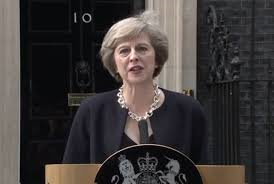It’s not a Coalition of Chaos – its Mayhem!

Liam Herbert, Chief Executive
Chelgate Chief Executive, Liam Herbert, reflects on the 2017 General Election.
So, there we have it. The PM is back in Downing Street and its business as usual. That at least is what Theresa May would like us all to believe as she spoke to the nation from the steps of No10 today having seen the Queen to form a new Government.
 No mention of the General Election. No mention of the loss of her majority, or the dramatic outcome after seven weeks of campaigning. Nothing to see here, just move along.
No mention of the General Election. No mention of the loss of her majority, or the dramatic outcome after seven weeks of campaigning. Nothing to see here, just move along.
The General Election has delivered a startling outcome – the incumbent Conservative Government has finished with fewer seats – losing 12 and the overall majority. Labour gain 29 and “the others” had a very bad day at the polls.
What is clear is that two-party politics is back and not just in England, whatever Nicola Sturgeon says about the SNP “winning the election in Scotland”. What is less clear, but will, over the weeks and months to come, be scrutinized and have many thousands of words devoted to detailed analysis is how this happened. How did we go from a 20-point Tory lead and landslide victory to a Hung Parliament and a 40% plus share of vote for Labour?
This is not the place for a long drawn out postmortem – but suffice to say Theresa May set out to make her election campaign about “him or me” and then failed to engage and challenge “him” directly or engage with anyone else in the UK. Meanwhile, Labour were out and about on the ground to build their share of the vote – in a move to protect the Corbyn leadership rather than win more seats than anyone else.
What Corbyn has clearly achieved is election gold – expanding the franchise by getting the “young vote” out. Aside from the high-profile rallies (in very safe Labour seats) the reach of Labour to young first and second time voters has been huge. Add to this the return of Labour voters who supported UKIP in Brexit and suddenly we are talking about Corbyn and Blair in the same breath when it comes to share of vote – Corbyn 2017 40.2% v Blair in 2001 40.7%. So hugely better than anyone predicted – in vote share and seats.
Yet, whilst we may be back to two party politics it’s not the old position as neither party could actually get over the line and achieve a majority. Both increased their share of the vote. In fact, May achieved a total vote of 13,650,900 which is higher than Blair achieved in the 1997 New Labour landslide (13,518,167). For all the parties, there is so much to be done to work out why, where and how this happened
So, what next? Theresa May has returned to Downing Street and pulled up the drawbridge. Presenting a position of providing “certainty”. It’s clear that her Downing Street operation must change – less reliance on key advisors. Will it be farewell to Nick or Fiona, perhaps not both? Plus, more involvement by and from her Cabinet. We will also wait to see what the Tory Party does next as failure is never left unpunished. May will certainly not lead the party in to the next election – but with another five years she could steady the ship and then exit well before the end of the term. The next few weeks will be significant – the start of Article 50 negotiations will focus minds and perhaps put off regicide, for the moment.
We can expect a strong response from Labour as Corbyn really does have a grip on the party now and he will feel the weight of grassroots support behind him. It also makes for a very interesting Summer as the Left move on rule changes to further “democratise” the leadership selection process and seek to increase their hold on the NEC. However, we can perhaps also anticipate him expanding his Shadow Cabinet to include more of the moderates in an attempt to unite the party in Parliament behind one leader and one agenda.
Meanwhile, in other news. Its farewell to UKIP who after the county elections and this General Election have effectively ceased to exist or be relevant. Its farewell to IndyRef 2 as the SNP consider the impact of a Labour and Tory return north of the border.
As for the LibDems, where next for them? Facing a reinvigorated two party system and growth in support on both the Left and the Right where to go and what to do to find appeal in the electorate. Tim Farron may have increased his MPs by 50% but having campaigned on a single issue we may expect a new face at the helm of the LibDems – enter Jo Swinson perhaps?
One thing is for sure – politics just got a whole lot more interesting. Who knows, we could be back doing this all again before the end of the year.
